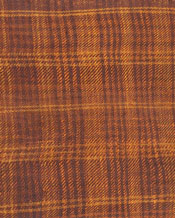Clothing design

Was there design in prehistory? If by design we understand objects intentionally created for their function and appearance, then it certainly did exist.
Clothing design incorporates cut and adjustment of individual clothing objects. Like today, but at a slower pace, changes in habits and taste influenced textiles and clothing in prehistory. We do not know if prehistoric people were aware of these changes or which mechanisms that controlled them. Changes in style, design and technique are important indicators that can contribute to a characterisation of the prehistoric society. Evidence for clothing in different periods consists of archaeological textiles and skin, as well as various clothing accessories, such as metal, amber and bone ornaments.
The clothing evidence is unequally distributed in different periods of prehistoric Denmark. Only little information is available for the Stone Age while more abundant evidence exists for the Bronze and Early Iron Ages. In the Late Iron Age archaeological textiles are very fragmented, but in this period information on clothing can be supplemented with contemporary iconographic sources.


